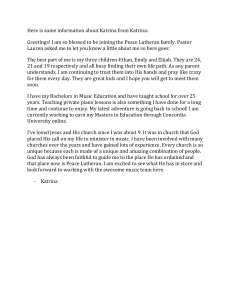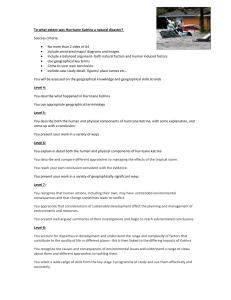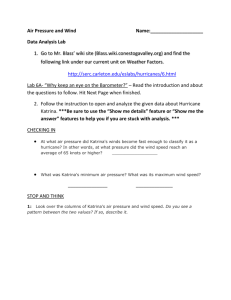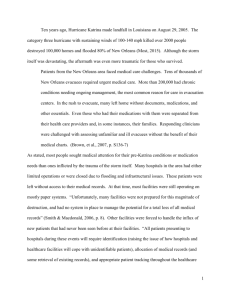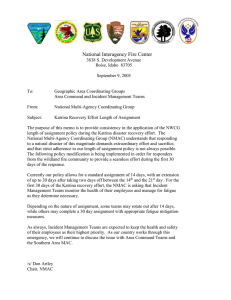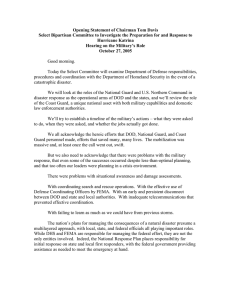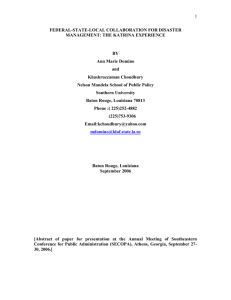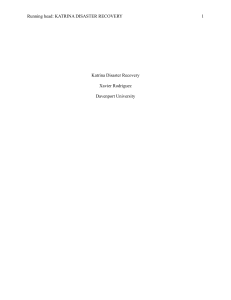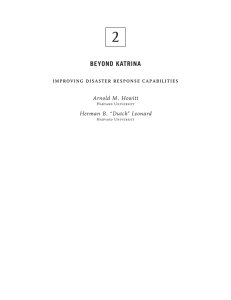Katrina Disaster Response
advertisement
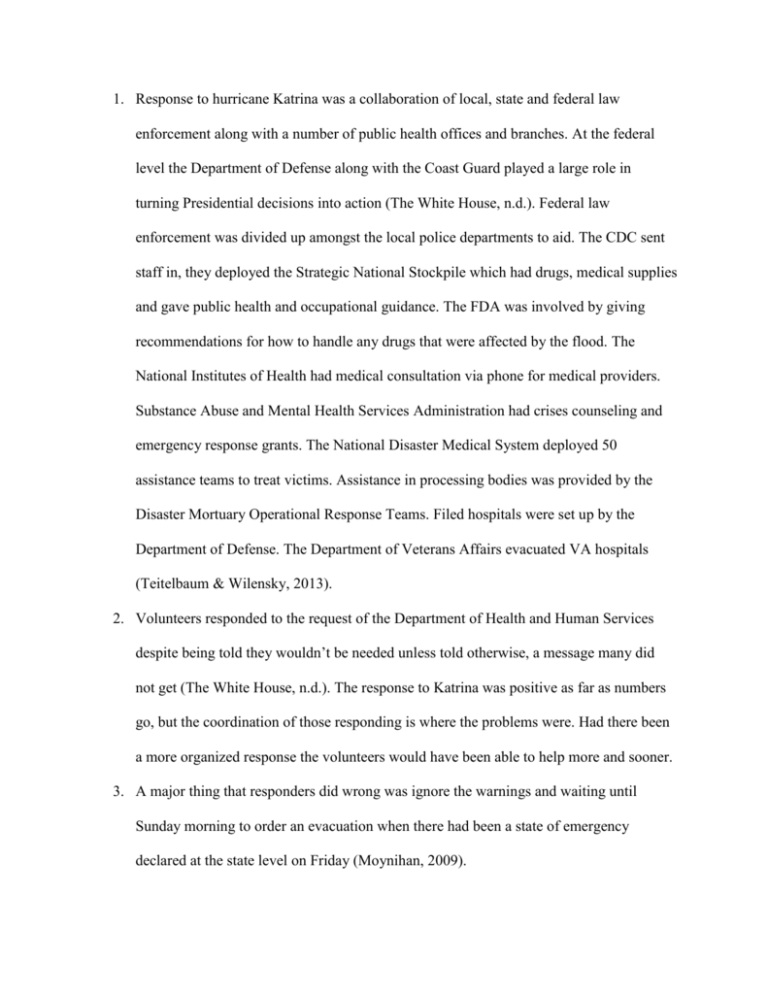
1. Response to hurricane Katrina was a collaboration of local, state and federal law enforcement along with a number of public health offices and branches. At the federal level the Department of Defense along with the Coast Guard played a large role in turning Presidential decisions into action (The White House, n.d.). Federal law enforcement was divided up amongst the local police departments to aid. The CDC sent staff in, they deployed the Strategic National Stockpile which had drugs, medical supplies and gave public health and occupational guidance. The FDA was involved by giving recommendations for how to handle any drugs that were affected by the flood. The National Institutes of Health had medical consultation via phone for medical providers. Substance Abuse and Mental Health Services Administration had crises counseling and emergency response grants. The National Disaster Medical System deployed 50 assistance teams to treat victims. Assistance in processing bodies was provided by the Disaster Mortuary Operational Response Teams. Filed hospitals were set up by the Department of Defense. The Department of Veterans Affairs evacuated VA hospitals (Teitelbaum & Wilensky, 2013). 2. Volunteers responded to the request of the Department of Health and Human Services despite being told they wouldn’t be needed unless told otherwise, a message many did not get (The White House, n.d.). The response to Katrina was positive as far as numbers go, but the coordination of those responding is where the problems were. Had there been a more organized response the volunteers would have been able to help more and sooner. 3. A major thing that responders did wrong was ignore the warnings and waiting until Sunday morning to order an evacuation when there had been a state of emergency declared at the state level on Friday (Moynihan, 2009). Another problem was their failure to prepare for responding to a disaster of this scale when it was a known possibility. The lack in communication and authority between federal and state government and law enforcement resulted in a slowed and inefficient response to the disaster. There was not organized, effective delivery of care for vulnerable populations that were put out of their home without their medications for chronic conditions. 4. While there were many things that went wrong in response to Katrina, there were also things that the responders did right. Once the evacuation was ordered, 90% of the residents were evacuated (Moynihan, 2009). The EPA and Coast Guard were able to work together in a clean-up effort. They were able to clean up seven million gallons of oil and resolve over 2,300 cases of pollution (The White House, n.d.) The response by NGOs provided a wide range of support for individuals. 5. Public health agencies functioned appropriately to Katrina but it was not done so in a timely fashion. This was partially due to the size of the affected area. There was not a heed to warning when it came to the storm as well as the infrastructure’s ability to handle such a storm. Once response was needed there was a lack of communication and coordination making it difficult for responders to be effective. 6. Initially in a time of disaster the local and state government put a response effort into action. Once the size of the incident is large enough to overwhelm the local and state government then the federal government takes over. With Katrina I do not believe the local or state authorities had a chance to respond before the damage was too large for them to effectively respond to. The federal response was slow due to them waiting for the appropriate requests from local and state authorities who were unable to make those requests because of the unique problems they were facing (Moynihan, 2009). 7. Legal authority was yet another obstacle of Katrina response. One area this was a problem was in debris removal. There are rules for removing debris from private property complicating the effort. The federal government faced challenges when restoring infrastructure by responding to individual requests rather than the infrastructure and key resource sectors with needs that need to be coordinated (The White House, n.d.). The chaos that occurred made it difficult for Federal resource managers to determine what resources were needed, what they had and where they were located showing the immense need for an asset-tracking system (The White House, n.d.). 8. Ideally we learn from our mistakes. While it is unfortunate that the right policies were not put into place when needed in situations like this they serve as effective learning opportunities. With the amount of analysis that has happened since Katrina I believe that the changes have been made for disaster management policies to be sufficient in meeting the needs of communities in the event of another disaster. Because each is unique there is always the potential for complications. We can only hope that we continue to learn and respond more efficiently as these occur. Moynihan, D. P. (2009). The Response to Hurricane Katrina. Retrieved from http://irgc.org/wpcontent/uploads/2012/04/Hurricane_Katrina_full_case_study_web.pdf Teitelbaum, J. B., Wilensky, S. E. (2013). Essentials of Health Policy and Law, (2nd Edition). [Kindle version]. Retrieved from Amazon.com The White House President George W. Bush. (n.d.) Chapter Five: Lessons Learned. Retrieved from http://georgewbush-whitehouse.archives.gov/reports/katrina-lessons-learned/chapter5.html
